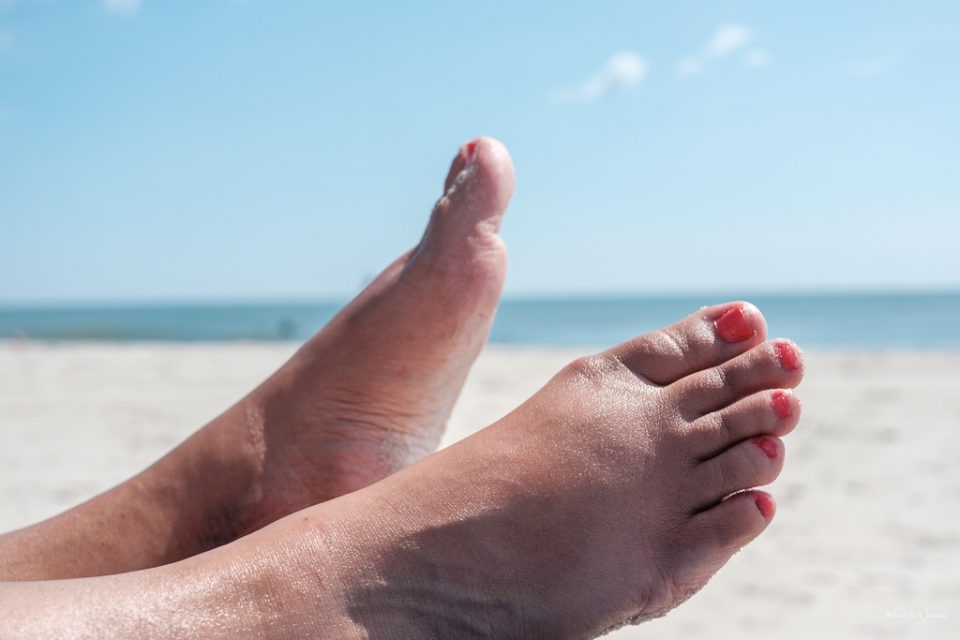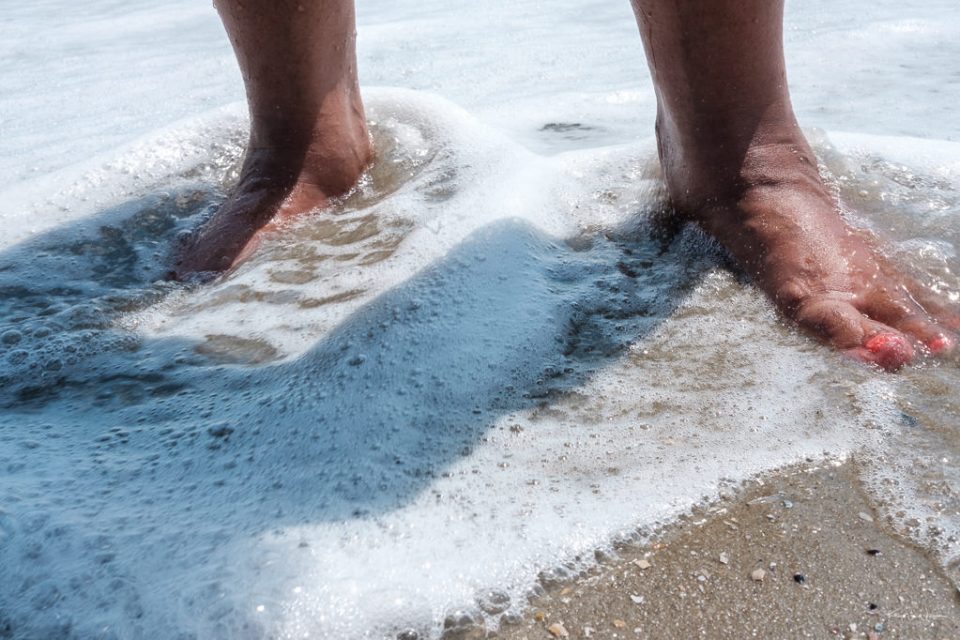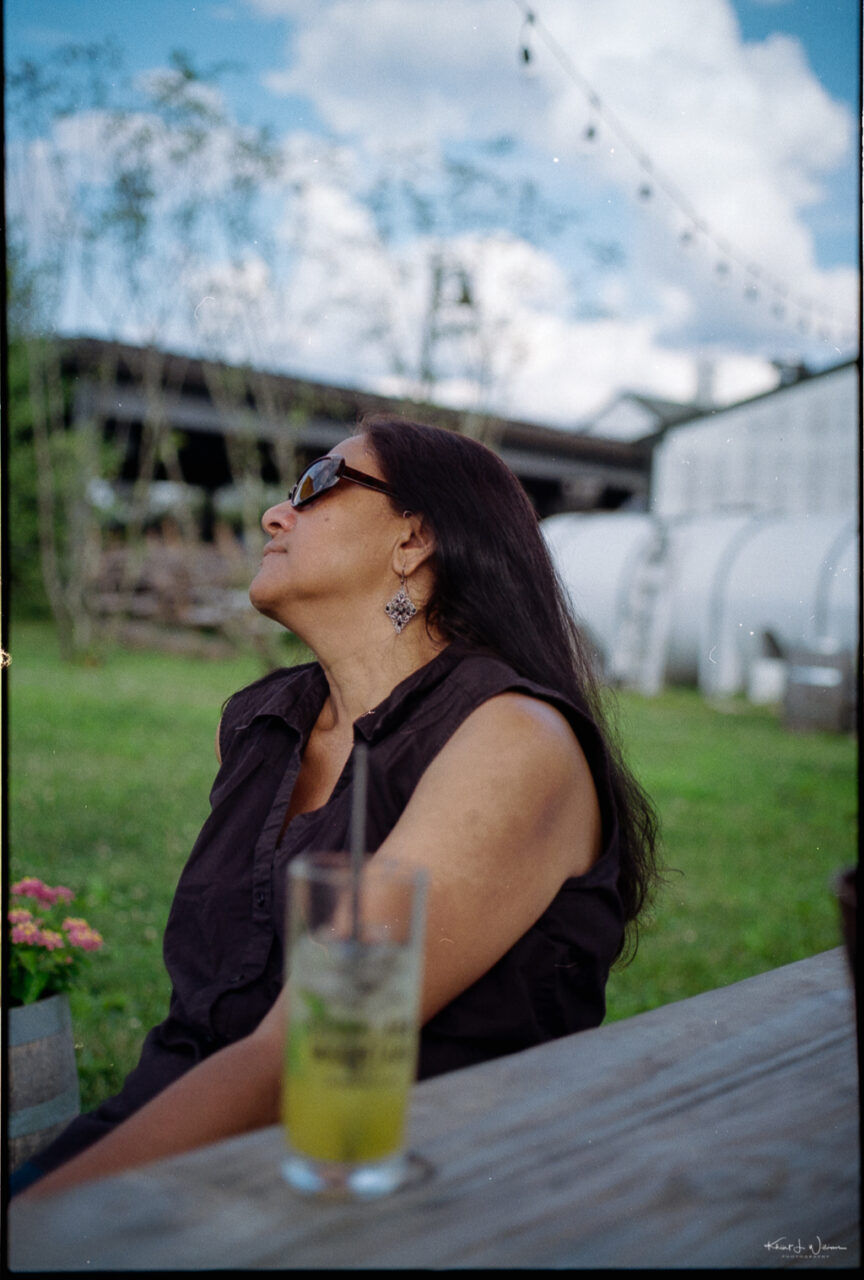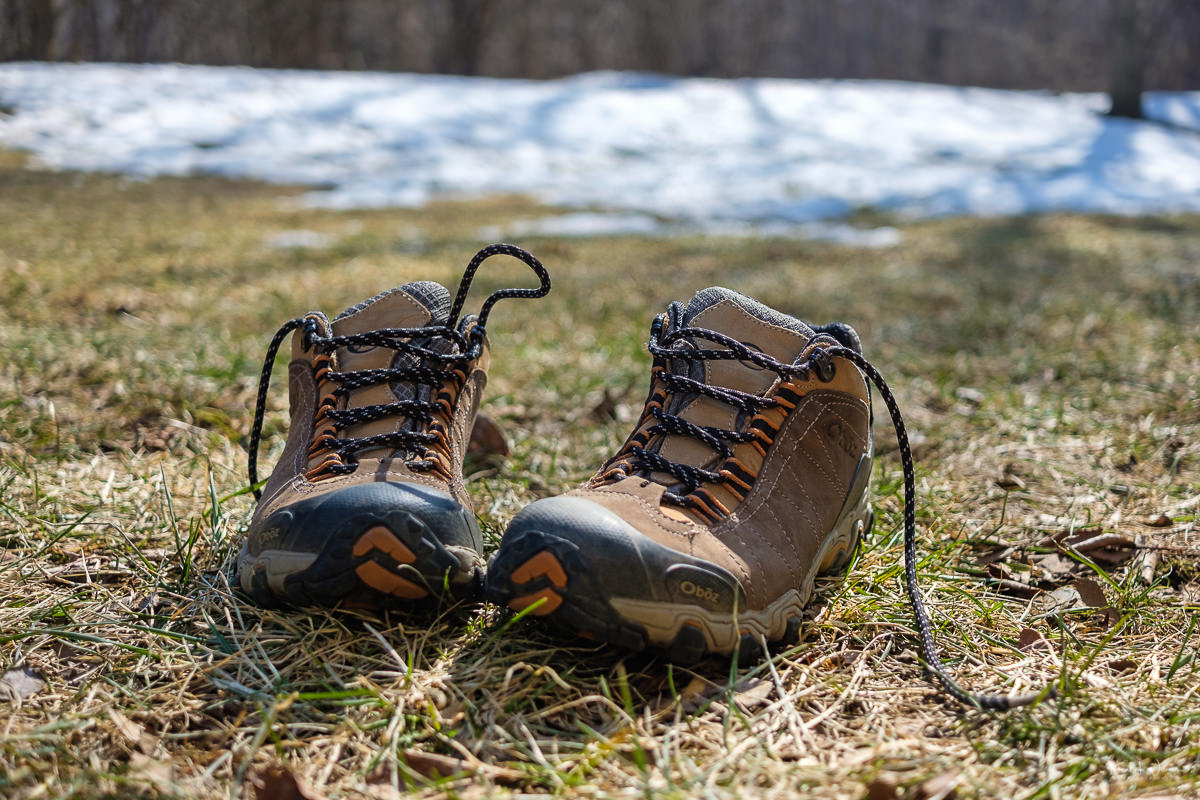Lens-Artists Photo Challenge #161 – Feet and Shoes
I am not a fan of shoes, even when outside. I love the feeling of cool grass or beach sand under my feet. It's so delightful.
Remember this?
This little piggy went to market,
This little piggy stayed home,
This little piggy had roast beef,
This little piggy had none,
And this little piggy cried "wee wee wee" all the way home.
My mom would recite that nursery rhyme to me while wiggling my toes. And I did the same to my kids.
I remember the first time we put shoes on Shaan's feet. Shaan cried and tried in vain to get them off; "what are these horrible things covering my beautiful little piggies".
When I first moved to the USA, I was astonished by how many people wore shoes inside the home. I mean, the bottom of the shoe has walked all over "yucky" stuff outside, and you are now transferring all the yucky stuff inside your home. Ew! Feet can be washed. Shoes, not so much.
Growing up in the Caribbean, no one, no one wore shoes inside the house. It was pretty common to go barefoot even when walking down the street to a friends house to play. I, fortunately, married an Asian woman (Bhavna's from India), and like the rest of her family, we have a "shoes at the door" policy. In most Asian and Caribbean cultures it is expected that you take your shoes off when entering someone’s home.
Some Americans seem to think feet are ugly and should be hidden inside shoes. I believe this is because they likely have ugly feet with bunions and hammertoes that they got over the years from paradoxically wearing shoes. Just a year into my daily commute to Wall Street, I started to develop pain in my feet, and the large toe on my right foot developed a slight curve. This was most likely due to wearing dress shoes while briskly walking to the office. Sometimes I would remove my shoes under the desk to get some relief.
Due to my diabetes, Bhavna discourages my outside barefoot walks, and I certainly would not go hiking without proper protective footwear. My favourite pair of shoes are my beach flip-flops. I think they are a decent compromise.
My Fujifilm X-T2 is still out for repair, and the 35mm film camera isn't helpful for "quick turn around" photography, so I skimmed through my profile looking for photographs for the Lens-Artists Photo Challenge #161 – Feet and Shoes. I found a lot more images than I expected.





Monday 16 August 2021
This is an excerpt from “Old America”, a post from the blog of Evan Tucker at The Times of Israel.
If you’re reading history to know what happens next, you won’t know by knowing history. Whether you know the details, you know the basic outline: progress followed by regress, reforms so long delayed they provoke revolutions, true believers proven wrong, revolutionary idealists causing reactionary movements and mass death, the remains conquered by realists who understand human folly, most of whom, being realists, are indifferent to suffering.
Tuesday 17 August 2021
Matt Wright in 35mmc on Picking your Color Negative Film Stock:
My thesis is that if you digitize your negatives, you shoot general purpose film and not specialty film (e.g. Ektar, tinted film, etc), and you shoot it as the manufacturer intended (e.g. without pushing or pulling) the film stock you use isn’t as important as you may think.
My suggestion is that you can simply pick your film stock based on speed, latitude and grain.
Although there are some caveats, many differences between film stocks (including most of what you find online in film stock comparisons such as differences in color and contrast) are largely negligible when applied to real world situations.
Matt has just blown my socks off! I was disappointed with the scans I had received of the same film stock developed at various labs. I bought myself an Epson V600 scanner but struggled to get things just right. I started using Silverfast 9 this week but still struggled to find a workflow that gave consistent results. This morning, I installed Negative Lab Pro for Lightroom, followed Matt's advice, and rescanned some Kodak Pro 100 negatives. I think the results are so much better.
This new workflow will save me money. I will still send my exposed rolls to be developed, but I will no longer pay for scans. I can do the scans at home myself and feel confined that I can get good results.
Based on what I have learned from various online sources and Matt's blog post, I have put together a workflow for colour negatives. The workflow I use for scanning is to scan the 35mm film strips in the holder as 48-bit HDRs with SilverFast 9 set to scan in “positive” mode and save the files as DNG files.
I then import the RAW DNG into Adobe Lightroom. After import, I select all the imported files, and select “File > Plugin-Extras > Update Vuescan/Silverfast DNGs”.
Assuming it all goes well, I use the white balance tool to sample off the film border. I then crop the image to the film border to ensure the film borders are not included in the image evaluation.
Within Adobe Lightroom type CTRL + N or File -> Plug-in Extras -> Negative Lab Pro from the menu, to launch Negative Lab Pro. Set the “Input” to “Vuescan/SF RAW DNG”, set the other pre-conversion settings in Negative Lab Pro and hit “Convert”. Voila!

Thursday 19 August 2021
After reading the article, How To Use Shadows For Impact1, I have realised that most of my recent images, both digital and analogue, have been a little flat. I may not have realised that I was capturing my images on overcast days. I don't think this was intentional but due to the habit of using the camera later in the day. But also, we've had a lot of overcast days recently.
‘I have always had a wariness of shadows,’ [sic Artist Philippa Stanton] confesses. ‘Shadows can be frightening, an unknown quantity, harbouring threat and shadowy characters. But shadows are a part of life, both aesthetically and spiritually. As silence proves the sound and pausing proves the act, it is always darkness that proves the light.’
...
When used sensitively, however, shadows can serve a whole variety of aesthetic functions: they can direct a viewer’s gaze, help to describe the form of an object, emphasise texture, create a sense of mystery, improve the balance of a composition, become the subject of an image themselves or simply lessen the impact of less-desirable elements in the frame.
I want to return to being more intentional with my photography. This was the norm for me until recent years. Most of my recent photography has been incidental with images captured as a consequence of an activity, e.g. out to dinner or at a family event or even while making coffee in the morning.
I want each photograph to be meaningful, so why not be intentional about the frames I expose? I think I need to head into a nearby downtown to capture pictures of the streets and find and appreciate the unapparent aesthetics, capture things that will remind me of exploring, of experiencing.
Friday 20 August 2021
Dan James writes about "The Soundtrack To Photography":
When I’m out on a photowalk, I always pick the same soundtrack.
That is, quite simply, bird song, the wind in the trees, the rain pattering down, leaves crunching beneath my feet, trickling water, or whatever else nature is providing around me, as I wander through the countryside.
For me this is all part of the joy of photography.
Being out amongst nature and not only seeing with enhanced photographer’s eyes, but paying as much attention to the details of the sonic landscape all around me also.
This too is my experience with photography in nature. I tell people I am a nemophilist, a seldom used word meaning ?A person who loves or is fond of woods or forests."? Dan's post reminded me that's it's been a very long time since I last went on a nature photowalk. I need to experience komorebi and Shinrin Yoku.
- How To Use Shadows For Impact, Amateur Photographer Magazine, August 19, 2021 ↩

